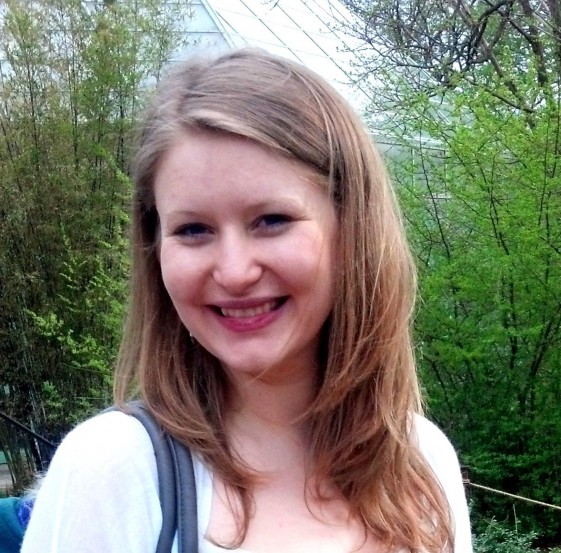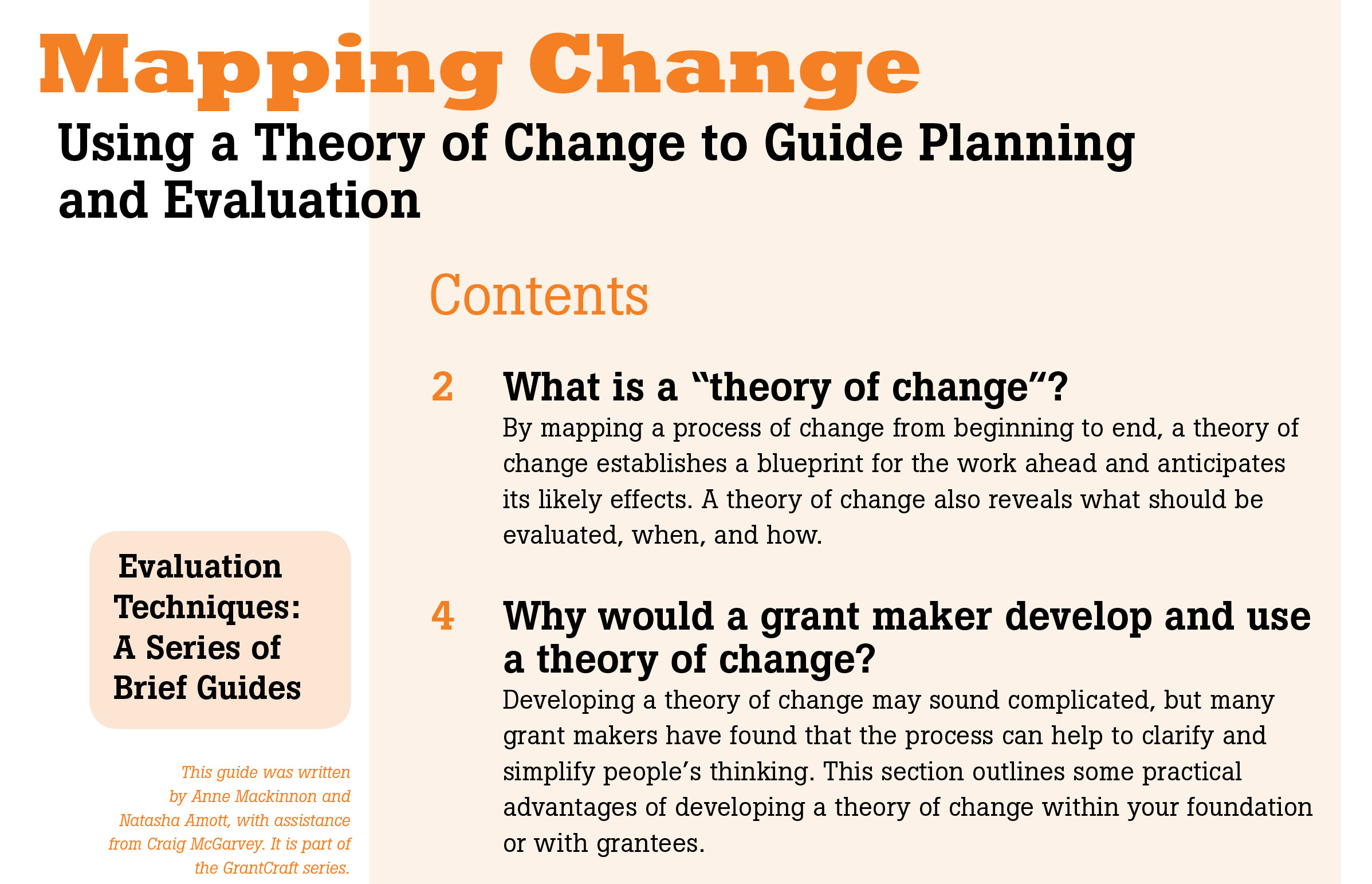Mapping Change Discussion Guide for Thoughtful Funder Reflection
These questions pertain to GrantCraft's guide, Mapping Change: Using a Theory of Change to Guide Planning and Evaluation. Read the guide independently. Then, together with your executive and program teams, dive into the following questions:
To get some practice working with grantees on their theories of change, think of one organization your foundation is funding. Refer to the "Picture This" section on page 8 of the guide as you consider the following questions.
1. Mission:
- What is the problem the grantee is trying to address?
- What are the underlying causes of the issue or problem they want to address? At what level or scale is the grantee working to address this issue or problem?
- What would a solution to this problem look like? What outcomes are they aiming for?
2. Target Groups:
- Who or what would be impacted by the grantee's programs?
- What services does the grantee offer to help their clients reach these outcomes? What other vehicles could be used to reach or influence the impacted groups and structures?
3. Strategies:
- What tools, resources or processes would the grantee need to impact or influence the target populations? What resources does the grantee already have that can be capitalized upon, and what resources would need to be developed?
- Are there organizational consequences associated with refining their program model in this way?
- Who else is working in the field? Are there opportunities for collaboration or a pooling of resources?
4. Outcomes:
- What does success look like for the grantee?
- How can those objectives be recognized and measured with indicators?
5. Now identify answers to the above questions that involve assumptions that must be taken into account. What assumptions is the organization making about the problem or issue they are addressing, its underlying causes, the level they are working on to address it, and its solutions?
Focus on Your Foundation
6. Is creating a theory of change something you already engage in inside your foundation?
- If so, what are some opportunities to integrate this more strongly into your workflow?
- If not, who should be involved in developing your foundation's theory of change? How could you gain buy-in from your colleagues to develop a theory of change?
7. Is creating a theory of change something you already ask of your grantees? How does or could this relate to your grant application or proposal development process?
Zoom Out: Strategic Direction
8. How does or would developing a theory of change help your foundation assess its impact?
9. How does developing a theory of change impact your foundation’s transparency?
Dive In: Building off of examples
10. Are there situations in which you would have resisted developing or following a theory of change in the past? What barriers to this approach can you identify and in what circumstances does this tool pose challenges?
11. Do you have experience with project-specific theories of change? What were the benefits or disadvantages of these?
12. Consider the example from the guide of using a collaborative process to encourage groups to sharpen their strategies for addressing their problems. Are there organizations that your foundation could bring together to develop and refine theories of change more effectively?
Elsewhere on GrantCraft
13. To help grantmakers weigh the advantages of different approaches, GrantCraft offers other guides on evaluation including those that focus on participatory action research and collaborative inquiry. Do you have a specific evaluation technique that has worked well for you? Submit your wisdom on your GrantCraft dashboard!


